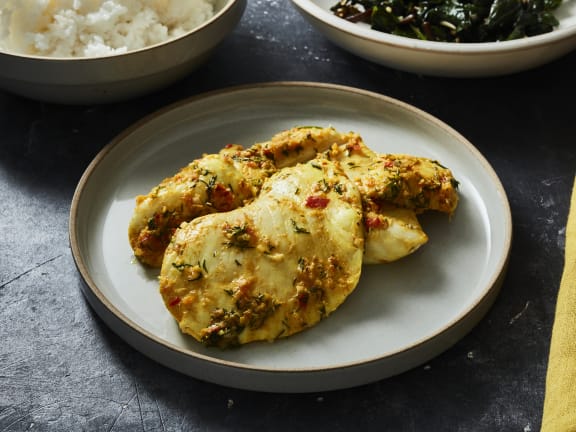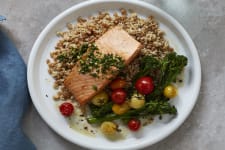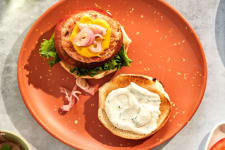Pacific halibut cheeks are the sweetest, most tender cut of this beloved species of Alaskan fish. Because there are only two cheeks per catch, this cut is typically reserved for the fishers who haul in this harvest.
The unique shape of Pacific halibut cheeks requires a different cooking approach than conventional cuts of this fish. They are literally the cheeks, so they are shaped like medallions rather than cut into fillets or steaks. To best enjoy this cut, it helps to know more about the differences between Pacific halibut cheeks and fillets, and how to prepare and serve it.
What do Pacific Halibut Cheeks taste like?
Pacific halibut cheeks are mild and sweet, with a taste that’s similar to Weathervane scallops. They’re more delicate than fillets, with a silky texture rather than a meaty one. Rather than becoming flaky when cooked, the cheeks break up into delicate slivers, similar to skate (a type of ray).
What is the difference between cheeks and fillets?
Pacific halibut cheeks are sweeter and more tender than the fillets. They’re cut from a more passive part of the fish’s body, giving them a more delicate quality than the fillets. This delicacy is what makes Pacific halibut cheeks so special.
The cheeks are naturally shaped like medallions, typically weighing anywhere between 3 to 6 ounces depending on the size of the fish. In contrast, fillets are cut along the body of the fish into different portions.
Nutrition Facts
Pacific halibut cheeks are a lean, healthy protein to add to your diet. They contain a good amount of vitamin D and potassium.
A 6-ounce serving contains:
-
Calories: 130 calories
-
Fat: 1.5 gram
-
Protein: 28 grams
-
Vitamin D: 5 micrograms, or 25% RDI
Are Pacific halibut cheeks sustainable?
Pacific halibut cheeks are sustainable when they’re harvested from Alaskan fisheries. If you’re shopping for a sustainable option for this special cut, make sure you choose fish sourced from Alaska.
How to Cook Pacific Halibut Cheeks
Pacific halibut cheeks cook more quickly than fillets, since they tend to have a thinner, flatter profile. They also are more delicate, so they become flaky when cooked to a medium-rare doneness. When cooked beyond medium-rare, these cuts lose their silky quality.
Try making:
Where to Buy Pacific Halibut Cheeks
Indulge in sustainably-caught Pacific halibut cheeks by sourcing your seafood online from Wild Alaskan Company. You’ll get high-quality, wild-caught seafood delivered straight to your doorstep. Choose your fish subscription box today to get access to exclusive seafood offerings.






